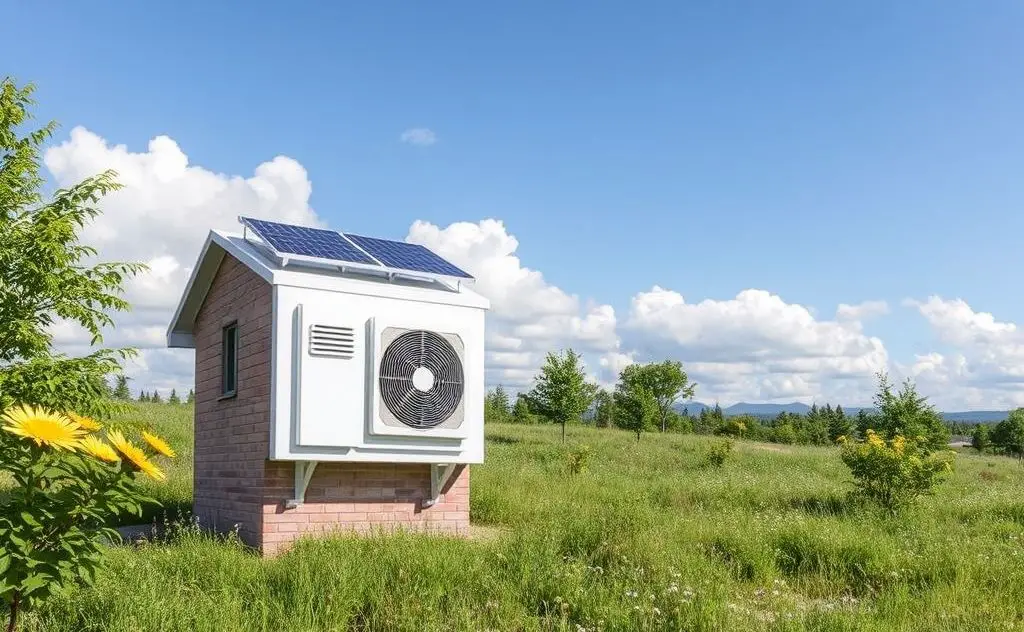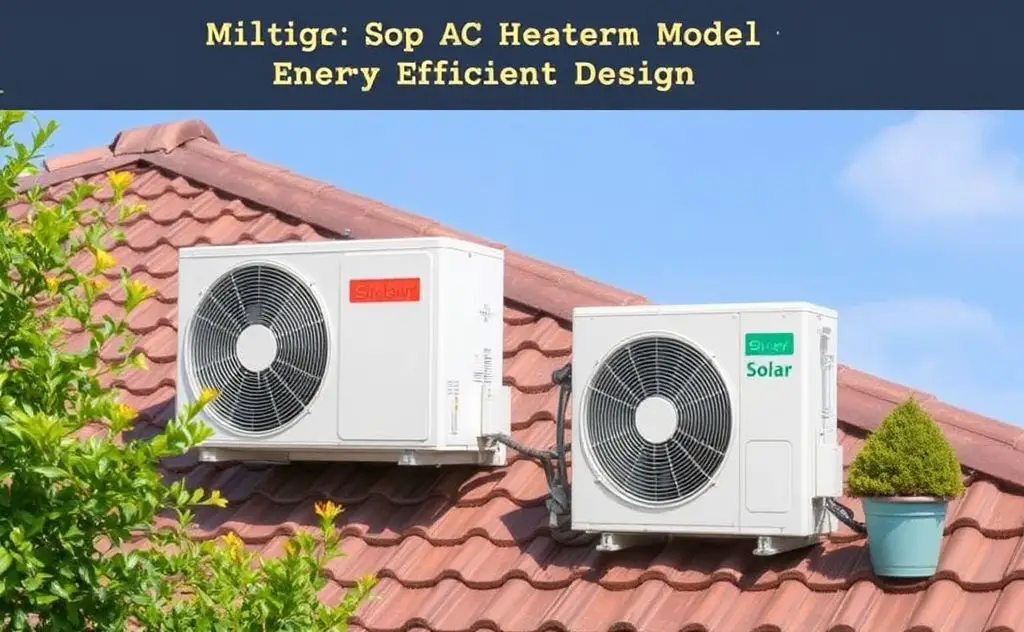A solar powered air conditioner heater efficiently uses solar energy to cool or heat spaces, reducing electricity costs and environmental impact.
Solar powered air conditioner heaters combine renewable energy with advanced HVAC technology to provide year-round climate control. These innovative systems can reduce energy bills by up to 70% while maintaining optimal indoor temperatures.

How Solar AC/Heater Systems Work
These hybrid systems use photovoltaic panels to generate electricity during daylight hours. When solar power isn’t available, they automatically switch to grid power or battery storage.
Key Components
- Solar panels (typically 3-6 panels per system)
- DC-powered compressor unit
- Heat pump technology for heating/cooling
- Smart controller for energy management

Top Solar AC/Heater Models
EG4 Hybrid Solar Mini-Split
The EG4 system offers:
| Feature | Specification |
|---|---|
| Cooling Capacity | 12,000 BTU |
| Heating Capacity | 12,000 BTU |
| SEER Rating | 22 SEER2 |
| Operating Range | -10°C to 58°C |
EcoFlow WAVE 2 Portable Unit
This portable option features:
- 5,100 BTU cooling capacity
- 6,100 BTU heating capacity
- Swappable battery system
- R290 eco-friendly refrigerant
Benefits of Solar-Powered Climate Control
Energy Savings
Solar AC/heaters can reduce electricity consumption by 50-70% compared to conventional systems. The Airspool system qualifies for a 30% federal tax credit, making it even more affordable.
Environmental Impact
These systems use natural refrigerants like R290 with zero ozone depletion potential. According to U.S. Department of Energy, solar HVAC can reduce a home’s carbon footprint by 2-3 tons annually.
Installation Considerations
Solar Panel Requirements
Most systems need 1,500-3,000 watts of solar capacity. South-facing roofs with minimal shading work best.
DIY vs Professional Installation
While some models like EG4 offer plug-and-play installation, complex systems may require professional HVAC technicians.
Performance in Extreme Conditions
Modern solar heat pumps maintain efficiency in temperatures as low as -10°C (14°F) and as high as 58°C (136°F). Some models include defrost cycles for winter operation.
Cost Analysis
| Component | Average Cost |
|---|---|
| Solar AC/Heater Unit | $1,500-$3,500 |
| Solar Panels | $1,000-$3,000 |
| Installation | $500-$2,000 |
| Total System | $3,000-$8,500 |
Maintenance Requirements
Solar HVAC systems require:
- Annual filter cleaning/replacement
- Seasonal inspection of refrigerant levels
- Periodic solar panel cleaning
- Battery maintenance (for models with storage)
Ideal Applications
These systems work particularly well for:
- Off-grid homes
- Sunbelt regions
- Supplemental zone heating/cooling
- Garage workshops
- Tiny homes and RVs
Future Technology Developments
Emerging innovations include:
- Integrated battery storage
- Smart grid connectivity
- Improved cold climate performance
- More compact solar panel designs
